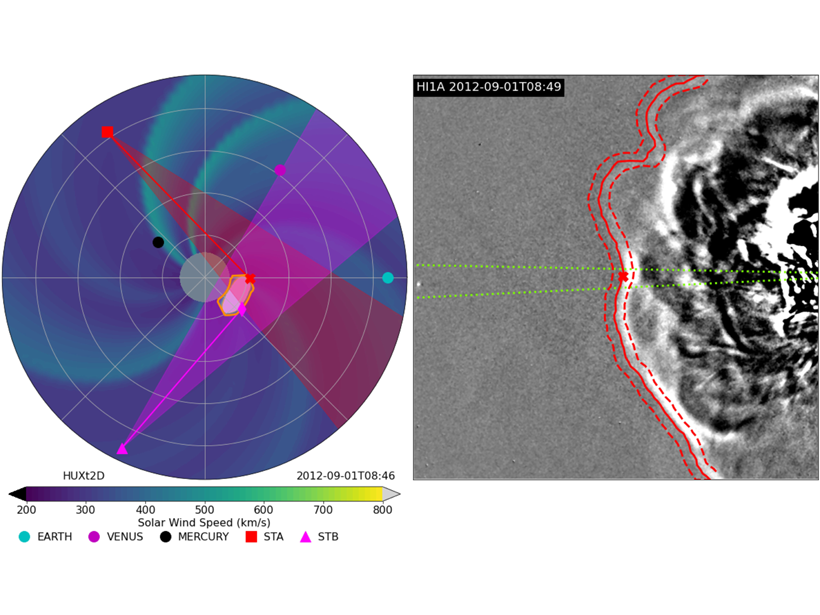Source: AGU Advances
The Solar Stormwatch (SSW) project coordinates citizen scientists in tracking coronal mass ejection (CME) events observed in white light from the STEREO A and B spacecraft at different heliographic longitudes orbiting at 1 AU. The HI1 instruments, identical on both spacecraft, are white-light imagers that observe sunlight that has been Thomson scattered by solar wind electrons. Barnard et al. [2020] employ the HUXt numerical model, which uses these STEREO white light images as input, treats the solar wind as a 1-D incompressible fluid and solves for arrival time of the CME perturbation of the solar wind at Earth. Ensemble modeling of different determinations of the inner boundary condition improves the forecast arrival time of CME disturbances of the solar wind at Earth, an important driver of space weather. Radiation threats to spacecraft and astronauts, as well as ground induced currents which can shut down power grids, are examples of space weather effects produced by strong CMEs, wherein advanced warning of arrival time may allow mitigation.
Citation: Barnard, L., Owens, M., Scott, C., & de Koning, C. [2020]. Ensemble CME Modelling Constrained by Heliospheric Imager Observations. AGU Advances, 1, e2020AV000214. https://doi.org/10.1029/2020AV000214
—Mary Hudson, Editor, AGU Advances

